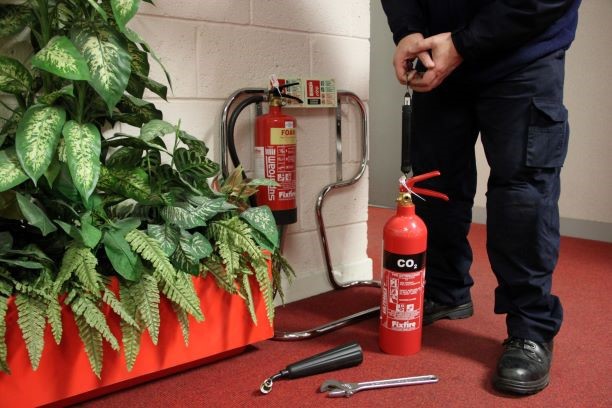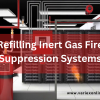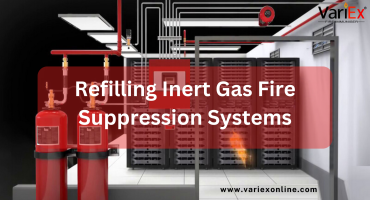![]()
Fire Immuniser
+91-7829629111
Email: info@variex.in
Varistor Technologies Pvt. Ltd.
Block-1, First Floor, Ardente Office One, Hoodi Circle, ITPL Main Road, Bengaluru, Karnataka 560048, IN
What are the inspection requirements for refilling fire extinguishers?
In the realm of fire safety, understanding the intricacies of inspecting and refilling fire extinguishers is paramount. As we embark on a journey to unravel the essentials, the spotlight falls on the fundamental question: "What are the inspection requirements for refilling fire extinguishers?" This guide delves into the critical aspects of maintaining these life-saving devices, exploring the keyword-rich landscape of refilling fire extinguishers to ensure they stand ready as vigilant guardians against potential fire hazards. Join us as we uncover the key elements that contribute to a robust fire safety strategy, fostering preparedness and resilience in the face of emergencies.
Understanding the Inspection Requirements for Refilling Fire Extinguishers
1. Visual Inspection: The first step in the inspection process is a thorough visual examination. This involves checking for any visible signs of damage, corrosion, or wear on the extinguisher body, hose, and nozzle. Additionally, the pressure gauge and other indicators should be inspected to ensure they are in proper working condition.
2. Weight Check: One key aspect of the inspection involves weighing the extinguisher. The weight of the extinguisher provides an indication of the remaining extinguishing agent. During refilling, if the weight is below the recommended level, it signifies the need for a recharge.
3. Pressure Testing: Pressure testing is a critical component of the inspection process. It ensures that the extinguisher can maintain the necessary pressure to expel the extinguishing agent effectively. This step helps identify leaks or issues with the pressure-retaining components.
4. Extinguishing Agent Examination: The type and condition of the extinguishing agent are crucial for the extinguisher's effectiveness. The inspection involves checking the agent for any signs of clumping, settling, or deterioration. If the agent is not in optimal condition, it may need replacement during the refilling process.
5. Hose and Nozzle Inspection: The hose and nozzle are vital components that facilitate the controlled discharge of the extinguishing agent. During the inspection, these parts are checked for any blockages, kinks, or damage that could hinder the extinguisher's performance.
6. Compliance with Regulations: It's imperative to ensure that the fire extinguisher and the refilling process comply with local safety regulations and standards. This includes adhering to guidelines set by fire safety authorities to guarantee the extinguisher's efficacy.
7. Professional Inspection: While some inspections can be carried out by the owner or designated personnel, a professional inspection by a certified technician is often recommended. Professionals have the expertise to identify potential issues that may go unnoticed during routine inspections.
8. Documentation and Record-Keeping: Proper documentation of inspections is essential for tracking the history of each fire extinguisher. Records should include details of inspections, weight measurements, pressure test results, and any corrective actions taken. This documentation aids in establishing a clear maintenance trail.
9. Training and Education: Those responsible for conducting inspections should undergo proper training to enhance their understanding of fire extinguisher components and inspection procedures. Well-trained personnel contribute to more effective and accurate inspections.
10. In-Depth Cylinder Examination: Beyond visual checks, a detailed examination of the extinguisher's cylinder is essential. This involves inspecting the interior for rust, corrosion, or any signs of wear that could compromise the integrity of the container.
11. Valve and Handle Inspection: The valve and handle are critical components for the controlled release of the extinguishing agent. Inspectors closely evaluate these parts to ensure they are in proper working order, with particular attention to the valve's operability and the handle's functionality.
12. Ongoing Maintenance Checks: Beyond scheduled inspections, regular maintenance checks are crucial. This includes periodic lubrication of moving parts, ensuring that all components remain free of obstruction, and addressing any minor issues before they escalate.
13. Electronic Monitoring Systems: In advanced fire safety setups, electronic monitoring systems may be in place. These systems provide real-time data on the condition of extinguishers, enabling proactive maintenance and reducing the risk of unexpected failures.
14. Ultrasonic Testing: Ultrasonic testing is a sophisticated technique used to detect leaks or weaknesses in the extinguisher's cylinder. This non-invasive method enhances the thoroughness of inspections, offering insights into potential issues that may not be visible through traditional methods.
15. Corrosion Control Measures: Implementing corrosion control measures is a proactive step in ensuring the longevity of fire extinguishers. This includes anti-corrosion treatments and protective coatings to mitigate the impact of environmental factors on the extinguisher's components.
16. Education on Inspection Procedures: Ensuring that personnel responsible for inspections are well-educated on inspection procedures is paramount. Conducting regular training sessions keeps inspectors informed about the latest safety standards and best practices.
17. Periodic Refresher Courses: Fire safety protocols evolve, and periodic refresher courses for inspection personnel help keep their knowledge up-to-date. This continuous learning approach ensures that inspectors remain well-versed in the latest industry advancements.
18. Integration with Building Safety Plans: Fire extinguisher inspection and refilling should be seamlessly integrated into broader building safety plans. This holistic approach ensures that fire safety is a comprehensive and coordinated effort within the larger context of overall safety measures.
19. Environmental Considerations: Recognizing the impact of environmental conditions on extinguisher components is crucial. Extreme temperatures, humidity, or exposure to corrosive substances can influence the rate of wear, emphasizing the need for tailored inspections based on the environment.
20. Collaboration with Fire Authorities: Establishing collaborative relationships with local fire authorities contributes to a more robust fire safety framework. Regular consultations with fire officials can provide valuable insights and ensure that inspection practices align with regional safety standards.
To sum it up in simpler terms, making sure fire extinguishers are regularly checked and refilled is crucial for keeping them in good working condition. This isn't just about following rules; it's about making sure these devices can be relied upon to put out fires when needed. Regular checks involve looking at the physical condition of the extinguisher, checking the pressure inside, and ensuring it meets safety standards. By doing this, we're taking proactive steps to prevent potential problems and making our surroundings safer. It's like giving our first line of defense against fires a regular health check to ensure it's always ready to do its job and keep us safe.
Frequently Asked Questions
- Why is it necessary to inspect and refill fire extinguishers?
Regular inspection and refilling are crucial to ensure that fire extinguishers remain in optimal condition, ready to respond effectively in the event of a fire. This process guarantees the reliability and functionality of these life-saving devices.
- How often should fire extinguishers be inspected and refilled?
The frequency of inspections and refilling depends on factors such as the type of extinguisher, its usage, and local regulations. Generally, an annual inspection is recommended, with refilling as needed based on the inspection results.
- What does a visual inspection entail?
A visual inspection involves a thorough examination of the extinguisher for visible signs of damage, wear, or corrosion. It includes assessing the condition of the hose, nozzle, pressure gauge, and other external components.
- Why is weight verification important during inspections?
Weighing the extinguisher helps determine the amount of remaining extinguishing agent. If the weight is below the recommended level, it indicates the need for refilling to maintain the extinguisher's effectiveness.
- What is pressure testing, and why is it performed?
Pressure testing ensures that the extinguisher's container can withstand the necessary pressure for effective agent discharge. This step identifies any leaks or weaknesses in the pressure-retaining components.
- How does one assess the condition of the extinguishing agent?
The inspection involves checking the extinguishing agent for signs of clumping, settling, or deterioration. If compromised, the agent may need replacement during the refilling process.
- What components are examined during hose and nozzle analysis?
Hose and nozzle inspection focuses on identifying any blockages, kinks, or wear that could hinder the controlled discharge of the extinguishing agent.
- Do fire extinguishers need professional inspections?
While routine inspections can be conducted by designated personnel, professional inspections by certified technicians are recommended periodically. Professionals have the expertise to identify nuanced issues that may go unnoticed during routine checks.
- Are there specific regulations for fire extinguisher inspections?
Yes, local and national safety regulations often stipulate guidelines for fire extinguisher inspections. Adhering to these regulations ensures both the efficacy of the extinguisher and legal compliance.
Is documentation important during the inspection process?
Proper documentation, including details of inspections, weight measurements, pressure test results, and any corrective actions taken, is essential. This documentation helps establish a clear maintenance trail and ensures accountability.
Final Say
We at VariEx.in or Variexonline.com have mastered the art of designing, installing, inspecting, and fixing automatic sprinkler systems with the help of our in-house team, which is capable of delivering the fire sprinkler services you need, whether large or small and at affordable cost.
To schedule a fire sprinkler installation, or you think our services could benefit your commercial property, contact us online or give us a call at, 7829629111










